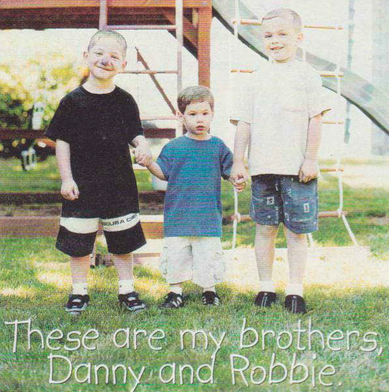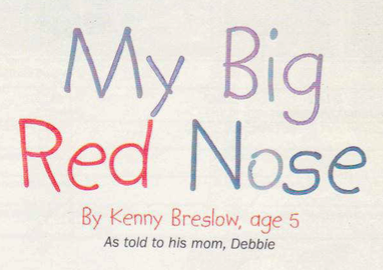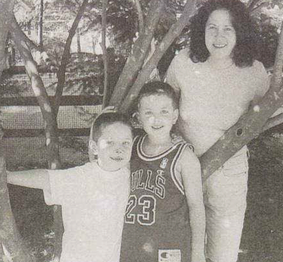Getting Better: Novel Synopsis
Getting Better (unpublished), is a novel that brings together patients, visitors, physicians and employees of a large hospital. The hospital, which in and of itself becomes a character in the story, is the setting for the serendipitous connections of the adult children of ailing parents and the clinicians who care for them. Written for an audience of men and women in the "sandwich generation", Ms. Breslow touches on the intertwining of hearts and lives and the relentless intrusion of human nature and the human condition.
Getting Better takes the protagonist, Constance, on a mission of devotion, surrender, and hope. Leaving her independence in Denver, Constance is once again the daughter in the home of her aging parents. Her hope of a fresh start in the town of her youth seems unattainable as Constance finds herself in the role of caretaker. Her deep devotion to her father proves to overshadow her own desires.
John Tudor, Chief, Infectious Diseases at Hudson Hospital, is a man whose life has been propelled by hard work, determination, and self-control. The intensity with which he manages his medical career, his staff, and the patients he cares for appears on the surface to serve him well. It's only after repeated hits that he begins to see his life transform in a way he'd never have imagined.
As they make acquaintance, the characters who surround both Constance and Dr. Tudor find each of their realities less difficult to bear. But, as personal and professional boundaries loosen, relationships change, physical health deteriorates, clinical judgment is questioned, and intimate associations become muddled, tension is created. What ultimately forces these men and women together or tears them apart is a matter of personal conviction.
With an audience of baby boomers confronting this exact dilemma, the multiple storylines -- some which will not turn out well --- show that even in the midst of what might seem catastrophic for the reader, life goes on. As each of the novel's characters painstakingly search for a pathway to peace, they come to respect and appreciate that acceptance is the only answer.
Getting Better addresses depression, loneliness, dementia, heartache, powerlessness, and love. It is a heartrending, yet realistic book that will resonate and prove catharticto the reader as he learns to see life through altered lenses.
Peace for the Taking: Novel Synopsis
On the occasion of her husband's 50th birthday, Anna Hurley, a suburban homemaker, finds herself on a much needed vacation in the Dominican Republic. While floating serenely in the ocean, she drifts to the recesses of her mind; reflecting on who she is and how she got there. In Peace for the Taking, the protagonist, Anna, attempts to revisit the past in a way that is safe enough to return to unscathed. But is that ever truly possible? Since Anna's life is a reflection of her early years, she relies on both her inner strength and abject fear to come to terms with the startling realities of her young adulthood.
When Anna moves to Los Angeles after graduating from college, she believes she is invincible. It is there that she befriends fellow employee Carrie, who is also from the East Coast. Carrie is the sister Anna never had. Almost instantaneously, they connect with one another and become joined in ways that birth siblings could never be. Both drawn to risk-taking behavior, their jaunts and antics lead them down a road of adventure, indescribable despair and critical demise.
David, handsome and newly separated, is the paralegal at the multispecialty medical group where Anna is charged with restoring a failing wellness clinic. Unsure of his interest in ever meeting another woman, let alone falling in love again, David is intrigued by Anna's youth, beauty, and free spirit. He and Anna embark on a timid courtship which evolves into a deep, but uncertain relationship.
Ultimately, David, and his daughter, Cara, capture a decade of Anna's life, along with her heart.
Years later, Anna's husband, Rob finds that in addition to spending time relaxing on an island paradise, he is unknowingly participating in the voyage of Anna's mind. Loving and stalwart, Rob stands by Anna as she navigates between the past and the present. In the process, he not only recognizes his role as a steady anchor for Anna, but learns more than he may have bargained for about the woman he married.
Peace for the Taking (unpublished) takes Anna from the East to West coast and back again. Like the gravitational forces of nature, she is attracted to both conflict and stability; the familiar and the uncharted. As she flies between the two locations—both in youth and maturity—she finds herself capable of releasing her deepest thoughts. Using her passion for music and her ties to literature as a segue to insight, Anna considers the relationships that have woven the tapestry of her life and provided the courage and wisdom needed to unleash her fears.
Her parents, her elder relatives, her best girlfriends, and her devoted husband offer an unconditional link to the freedom she seeks. It is while withstanding the onslaught of painful memories that Anna begins to see the larger implications of her life's experience.
Funny Face
My second son, Kenny, was born in 1997 with a rare vascular condition called arteriovenous malformation (AVM). The condition affected his nose, cheek and lip, but primarily his nose. It was clear there was little patient-friendly information on this rare condition to support parents. Kenny’s surgeons provided me with information and articles which were highly clinical. I reached out to those who could help me understand the information; highlighting the words that were unclear to me and writing definitions on note cards.
Information from Kenny’s doctors was supplemented with hundreds of articles ordered from medical libraries. I am indebted to the Englewood Hospital and Medical Center Library (Englewood, NJ) for ordering articles for me and mailing them promptly. Once I became versed in understanding AVMs, I began to write and publish my work. My goal was to educate both health care professionals and parents of children with vascular anomalies. I am the author of FUNNY FACE; about Kenny’s experience living with a facial difference.
The book is available on line to health care professionals, craniofacial centers, hospitals and parents of children with facial anomalies and other rare medical conditions. I've since written articles for national magazines and craniofacial support and advocacy newsletters to help the public gain awareness about arteriovenous malformations and the medical/psychosocial repercussions resulting from this condition. I advocate at the local schools; hoping to educate teachers and students about Kenny’s facial difference. Kenny and I have also spoken at the Hyman-Newman Institute for Neurology and Neurosurgery (INN) fundraising dinners.





